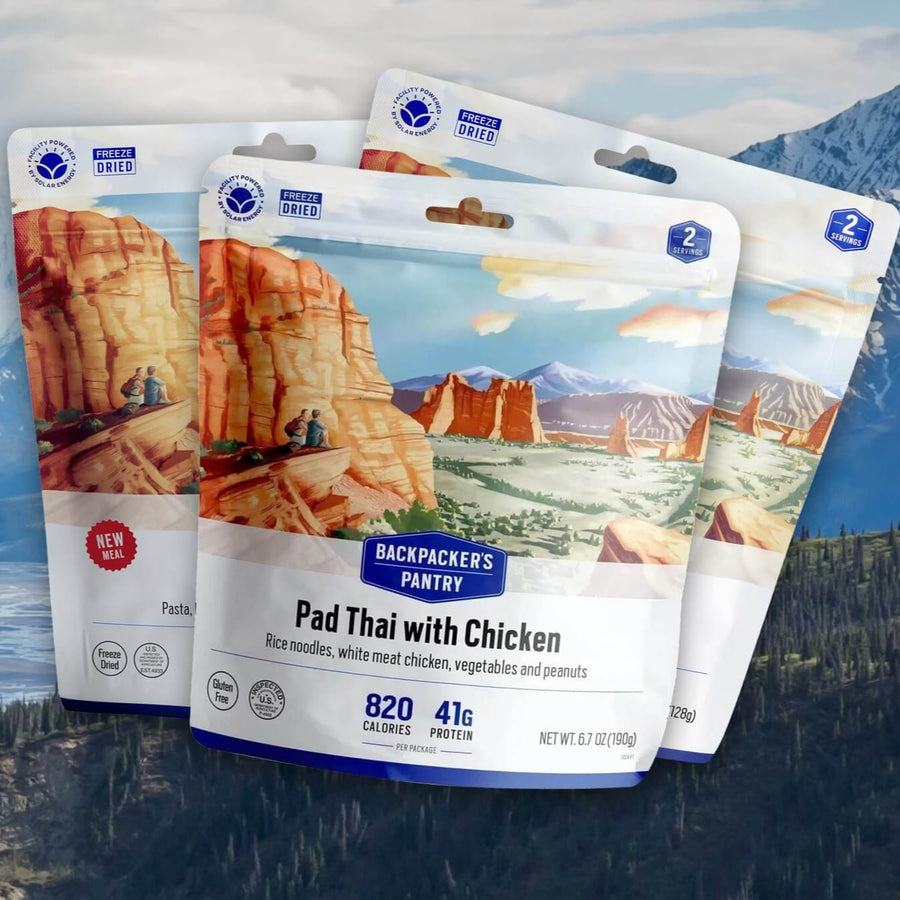How to Thoroughly Prep for Thru-Hiking | Backpacker's Pantry

Make Your Thru-Hike More Gratifying Than Grueling
Feel like you’ve reached a plateau when it comes to day hiking? Want to take your outdoor exploration and adventures to the next level? Maybe it’s time for a thorough consideration of thru-hiking.
Thru-hiking is far removed from your day- or weekend-long backpacking treks. And while it will offer an experience unlike any you’ve had as you grow from outdoor novice to expert, it comes with its share of challenges. Read on to discover how to make your thru-hiking journey a success and ensure you see your trail through from start to finish.
What it is
Thru-hiking is generally defined as hiking a long-distance trail from end to end in one hiking season. Iconic thru-hike routes include the Appalachian Trail (more than 2,180 miles), the Pacific Crest Trail (2,660 miles), and the Continental Divide Trail (3,100 miles), although a thru-hike doesn’t have to be limited to such extensive treks and can refer to any end-to-end hike of any distance.
The experience shouldn’t be underestimated, and failure rates and injuries can be high. Depending on length and difficulty of terrain, thru-hiking can be as grueling as it is invigorating and rewarding, according to the the Pacific Crest Trail Association. “Weeks or months spent in nature is good for body and soul. It’s a magical experience. You’ll meet countless wonderful people. … Stunning scenery is the rule.”
The key to a successful thru-hiking trip is preparation of both body and mind.
Get in shape
Take plenty of time to condition yourself physically. Thru-hiking is not just a stretch of a few days of hiking, but of weeks or months in remote and challenging terrain. (The Appalachian Trail Conservancy states it takes five to seven months to thru-hike the trail from Georgia to Maine.)
Even if you’re not tackling the 2,100+ miles of the Appalachian, a thru-hiking trip is one that will take more than a weekend and will require strength and endurance. To prepare your body:
-
Find a workout that works
There are no shortage of training programs out there; find one that includes cross-training and builds strength and endurance.
-
Walk, walk, walk
Erik Asorson on his Erik the Black’s Hiking Blog says the best way to prepare for hiking is walking every day.
-
Overnight hike
And do so in mountainous terrain that will mimic your thru-hike.
-
Learn to carry your pack
Start out with an empty pack and add weight incrementally until you can carry all the items you plan to take, then reevaluate and pack only necessities, says the Appalachian Trail Conservancy.
The Mental Game
A successful thru-hike also requires dedication and organization. Make a commitment to your goal and be unwavering in your quest to achieve it. Then make a checklist of all the little details that can make or break your trip.
Pacific Crest Trail Association recommends learning backcountry skills. Other boxes to check are:
Plan, plan and plan some more
Plan your route and gather all the maps and other trail info you will need on the trail.
Plan your budget. Balance the cost of occasional hotel stays and restaurant meals with the mental/morale boost they can provide.
Plan how much cash you’ll need along the way for said boosts, along with supplies and incidentals and an emergency fund for unexpected equipment or gear replacement.
Decide on resupply strategy
This is where your pack weight also comes back into play. You can carry less in your pack and resupply at stops along the trail, mail yourself food and supplies at stops along the way or do a little of both.
Get the right gear
You’ll be carrying your life on your back and that can really wear you down. Most thru-hiking beginners ditch several pounds of unnecessary gear within the first week of their trek. The blog recommends investing in ultra-lightweight gear as well as good lightweight shoes.
Apply for any necessary permits
This will vary depending on where you hike.
Prepare to be gone
Depending on the the distance of your thru-hike, you will be gone anywhere from a few weeks to a few months. So make sure the bills, the pets, the car, etc. are taken care of for however long you’ll be gone. Here’s our quick guide to how much it costs to thru-hike, plus helpful budgeting tips.
Take care of yourself on the trail
Being fit and ready for your thru-hike also means taking care of yourself while on the trail.
If your body tells you to go slower, the best thing you can do is listen. Second best is stretching, which should be done daily.
Similarly, your brain might need a little TLC on the journey. CleverHiker calls fighting mental fatigue a “battle” and says “keeping a level head while your tired, wet, cold, sore, bored, and hungry is really the name of the game.” The blog says brief stints of reading, writing, photography, videography, music, and podcasts are common ways that thru-hikers take the edge off.
The best and most often repeated advice on taking care of your mental and emotional health on the trail is to never falter in your commitment now matter how tough it gets.
Keep a positive attitude and your eyes on the prize, and with the right preparation, you will have the journey of a lifetime.
Backpacker's Pantry provides gourmet backpacking food, browse our lightweight, nutritious food for the trail.





